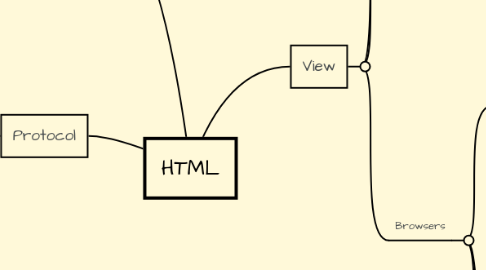
1. View
1.1. CSS
1.1.1. CSS1.0
1.1.2. CSS3
1.2. DOM
1.2.1. Elements
1.2.1.1. Availlable on load
1.2.1.2. Dynamically Loaded
1.2.2. Layouts
1.2.2.1. Fluid
1.2.2.2. Static
1.2.3. Standards
1.2.3.1. Core DOM
1.2.3.2. XML DOM
1.2.3.3. HTML DOM
1.3. Browsers
1.3.1. Devices
1.3.1.1. Web
1.3.1.2. Mobile
1.3.1.3. Tablet
1.3.1.4. Kiosks
1.3.1.5. TV
1.3.2. Performance
1.3.2.1. Network
1.3.2.2. Page Rendering
1.3.2.3. Page Loading
1.3.2.3.1. Lazy loading
1.3.2.3.2. Dynamic Loading
1.3.2.4. Waterflow chart
1.3.2.5. Profiling
1.3.3. Security
2. Events
2.1. Javascript
2.1.1. Frameworks
2.1.1.1. Angular.js
2.1.1.2. Backbone.js (Frontend)
2.1.1.3. jQuery (Frontend)
2.1.1.4. Node.js (Backend)
2.1.1.5. sails.js (Backend)
2.1.1.6. Meteor (Full Stack using Node.js in the backend)
2.1.1.7. React.js (Fullstack - Facebook)
2.1.1.8. YUI (Frontend)
2.1.1.9. Mean.js (Fullstack using Angular.js, Express, Node.js)
2.1.2. Standard
2.1.2.1. ECMAScript
2.1.3. Data
2.1.3.1. XML
2.1.3.2. Json
2.1.4. Security
2.1.4.1. Cross Site Scripting (XSS)
2.1.4.2. Cross domain access (Access control Allow origin)
2.1.4.3. OS
2.1.4.3.1. Accessing File System
